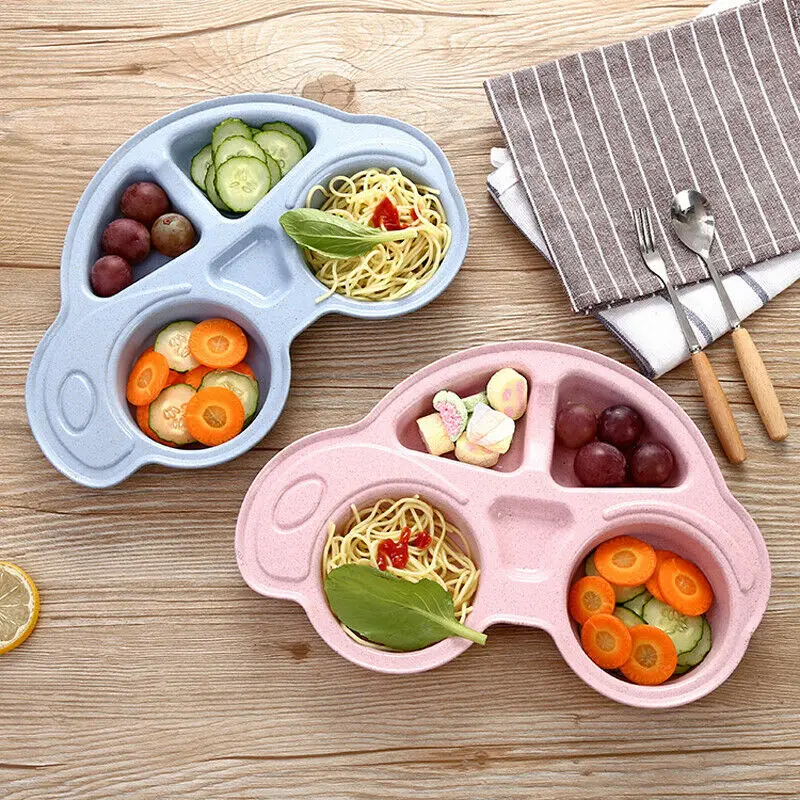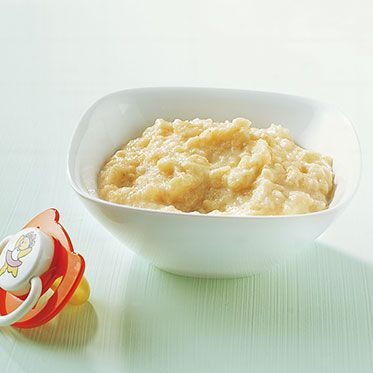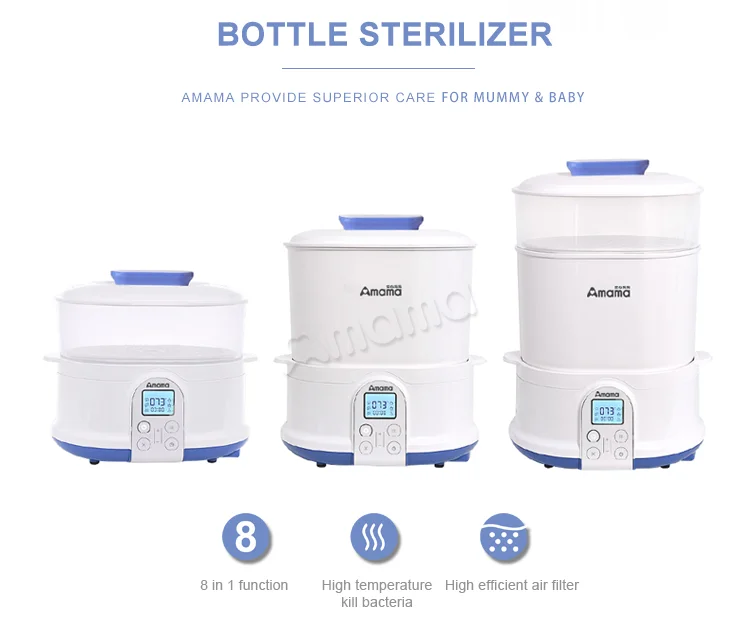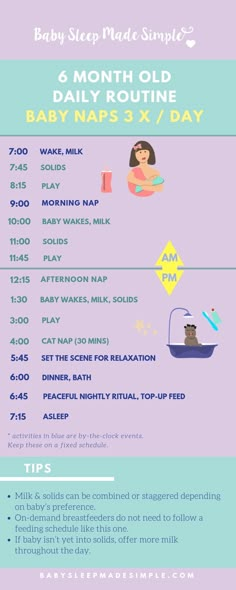Spoon feeding your baby
Baby-led Weaning vs Spoon Feeding: Different Ways to Introduce Solids
Home / Food Allergy Blog
Previous / Next
There are many different ways to introduce solids to your baby - from spoon-feeding purees to letting your little one intuitively reach for finger foods and put them in their mouth.
The two most popular methods of introducing solids are baby-led weaning and spoon-feeding. Each method has its pros and cons, and you should do the method you feel most comfortable and confident with. Here are some of the biggest things to consider when deciding what method is best for you and your baby.
What is baby-led weaning?Finger food first, also known as baby-led weaning, is a way to introduce solids to your little one that relies on their natural instinct to bring food to their mouths.
Skipping purées and spoon feeding entirely, babies are encouraged to feed themselves independently, choosing different tastes and textures at will. Babies have a number of built in reflexes to manage finger food as early as 6 months of age. These reflexes help them bite, chew, swallow and even push food forward and out of the mouth.
The best foods for baby-led weaning are finger-thick, soft, and easily squishable between your fingers. Some examples of finger-thick foods include banana, sweet potato fries or wedges, green beans, mango slices and avocado. Try to avoid slippery foods that are hard to hold, or choking hazards like raw apple or whole nuts. To avoid any hazards for your child, slice up foods into small easily manageable pieces, or steam fruits and vegetables until they are soft - just be sure that they are cooled before serving!
Allowing your baby to make all food choices for him or herself, parent’s should still be nearby to monitor and help guide their baby through the weaning process. It is important to let your child handle the food themselves, and not to push food into their mouth.
By exploring baby-led weaning, you are allowing your little one to try a wide variety of tastes and textures, set their own feeding pace, establish a healthy relationship with food, and enhance oral and motor skills.
- Improved oral and motor skills
- Encourages an adventurous palette with different textures
- Easy to enjoy family meals together
- Less work to mash and puree foods
- Creates a responsive feeding environment
Spoon-feeding has traditionally been the prevalent way to introduce solids to babies. With this type of feeding technique, you start with smooth mashes or purées, and progress to thicker and lumpier textures over time.
Due to the puréed nature, these foods need to be spoon-fed by a caretaker, but as you progress to thicker textures, you can hand your child the spoon and they can practice self-feeding.
It's best to offer your baby a variety of foods, like fruits, vegetables, grains, and meats in this feeding format so they get a variety of tastes, textures, and nutrients from the start. Shallow or flat spoons are best while spoon-feeding to prevent scraping the spoon on the roof of their mouth.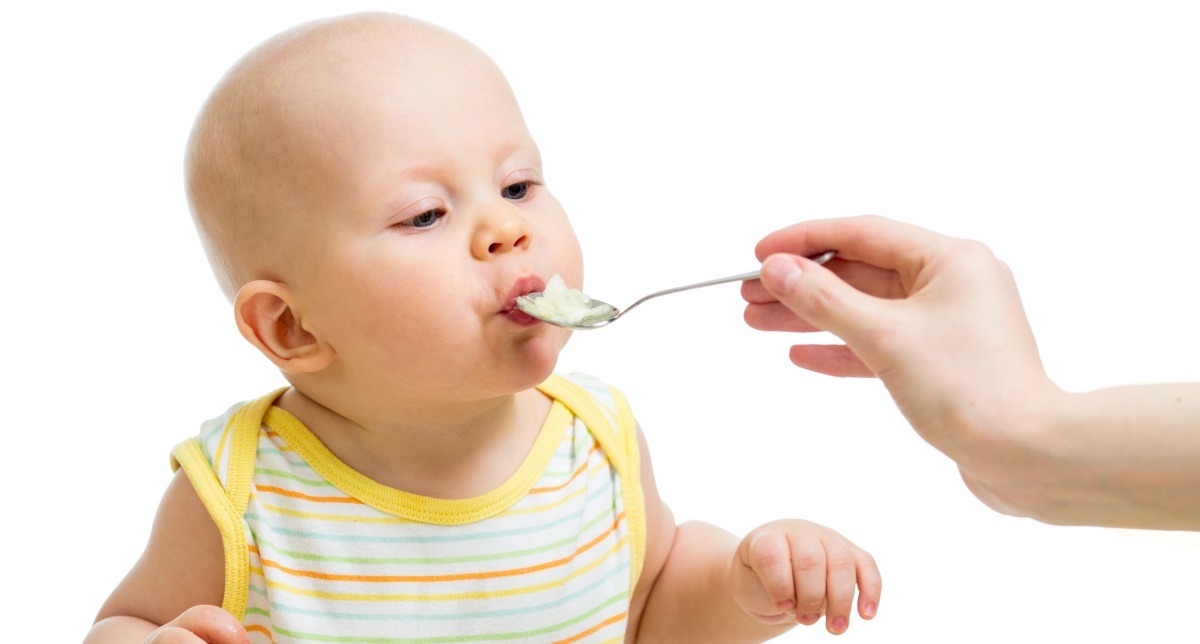
With spoon-feeding, it is important to progress to appropriate textures to help develop the oral and motor skills they need. Staying on thin, watery purees for too long can make transition to thicker, lumpier foods harder.
Benefits of spoon-feeding- Fewer choking hazards
- More control in the nutrient intake as less food ends up on the ground
- Saves time to serve pre-made purees
- Improved motor and oral skills
- Encourages healthy mealtime habits with the family
There is no one best way to feed your baby. Recent studies found that there was no significant difference in nutrient intake between baby led weaning and traditional feeding, as long as parents were providing appropriate foods. Whatever feeding method makes you comfortable, confident, and is the best fit for your family will be perfect for you and your little one.
In fact, you can offer your baby a combination of mashed foods and finger foods starting at 4-6 months.![]() As you introduce solids, you may find that your baby will prefer one way of feeding over the other, but they can still learn both skills at the same time. Just remember that introduction of food is complementary to breastmilk and/or formula feeding, which should remain the primary source of nutrients and calories up through the first year.
As you introduce solids, you may find that your baby will prefer one way of feeding over the other, but they can still learn both skills at the same time. Just remember that introduction of food is complementary to breastmilk and/or formula feeding, which should remain the primary source of nutrients and calories up through the first year.
How to Spoon Feed Baby the Right Way!
Learn how to spoon feed baby even if you’re using baby led weaning, and how to troubleshoot baby gagging, throwing food on the floor, and more!
Affiliate links used below. See our full disclosure.
Starting solid foods is an exciting time for you and your baby! But, it’s easy to feel overwhelmed with exactly how to spoon feed your baby.
Is there a right way?
A wrong way?
Or, maybe your baby is having a hard time eating from a spoon?
As a pediatric OT, I’ll be answering all those questions so you can feel confident getting started or troubleshooting spoon feeding your baby.
When Should You Introduce Purees?
Let’s get started with the best time to start spoon feeding your baby.
In the past, it was recommended to introduce solids between 4-6 months. Some doctors would even recommend introducing thin cereals before that or adding them into the bottle.
Your parents may have fed you this way.
But, the American Academy of Pediatrics now recommends waiting until 6 months of age before introducing solids to your baby. They continue to recommend soft or pureed foods as the first introduction to solid foods in order to prevent choking.
We now know that babies’ digestion systems just aren’t mature enough to handle foods and that most don’t have the postural control for safe swallowing before 6 months.
Before 6 months, a powerful tongue thrust is also likely to be present which means your baby may inadvertently push the food back out of their mouth when you try to spoon feed them at an earlier age.
Parents often confuse this with a baby not liking the baby food, but it’s actually an involuntary action.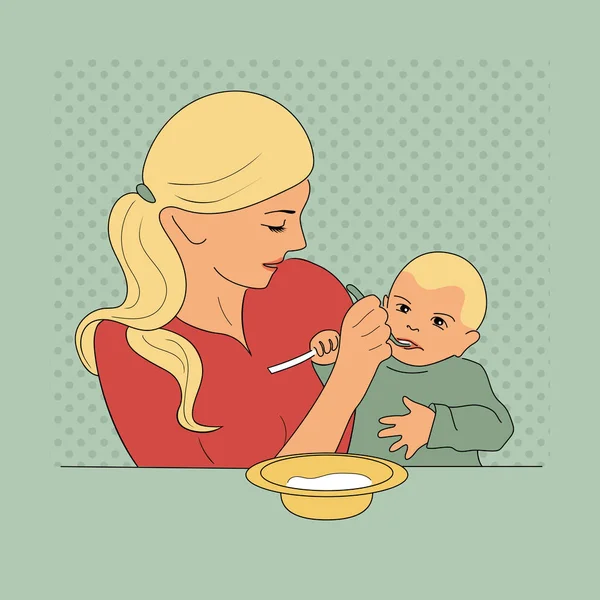
So, despite what well meaning grandparents may say, we now know waiting till 6 months is the best time frame for beginning to spoon feed your baby.
Head to our Feeding Schedule for 6-7 month olds to get an idea of how, and often when, you should be spoon feeding your baby.
What About Baby Led Weaning (BLW)?
In more recent years, there has been a huge movement towards Baby Led Weaning (BLW).
Baby led weaning is a method for introducing solid foods by allowing your baby to feed themselves rather than be spoon fed by a parent. Read about the pros and cons of Baby Led Weaning.
Baby Led Weaning gives babies the ultimate sensory experience while they eat, but it can also lead to delayed introduction of solids during your baby’s optimal window if they aren’t getting the hang of eating BLW type foods.
Some babies do really well learning to eat with BLW, and some don’t.
Whether you choose to go the BLW route or not, purees are still important to feed your baby sometimes because you’ll want them to also be able to eat foods like applesauce, yogurts, and soups.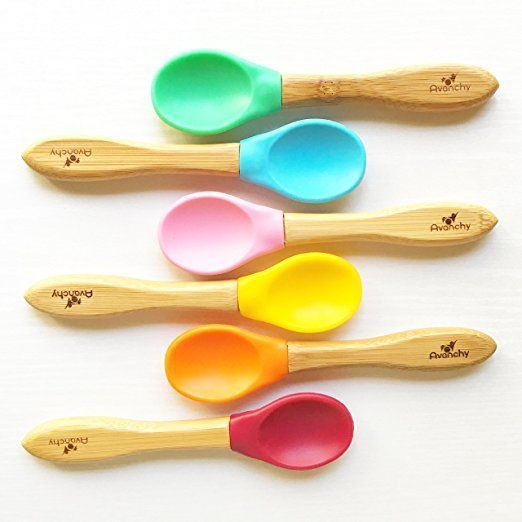
Check out our Mega List of Table Foods for great food ideas to start with.
How to Start Spoon Feeding Baby
Step #1: Make sure that they’re 6 months old, have good head control, and can sit upright to eat and swallow.
Step #2: Get them in the right position.
The position of your baby is often overlooked. It’s easy to sit them on your lap while feeding them or feed them while they’re in the car seat. But that isn’t the safest position and can impair the development of their feeding skills.
Sitting on your lap or not in a supported seat is actually more challenging for babies. If your baby is focusing all their energy on sitting upright, they aren’t able to use their mouth as effectively.
To ensure your baby is seated properly, position them in an age appropriate booster seat or highchair with a footrest.
Ideally their hips, knees and feet should be at a 90 degree angle if possible.
This means that when babies are first learning to eat, they should have support under their feet and they shouldn’t look slumped over. Not every highchair or booster seat does a good job keeping your little one in the right position.
My absolute favorite chair that grows with them into childhood is the Tripp Trapp, it’s an investment, but they’re so well made, they last forever.
My son is 7 and has been using it since he was 6 months old!
The Keekaroo is another option that’s a little lower in price.
Step #3: Use a spoon with a flat small bowl, it’s easier for your baby to remove the food.
The bowl of the spoon is so important. You want it to be mostly flat or to have a shallow bowl. That means it can’t hold too much of the puree on it.
The spoon should also have a narrow bowl. If your baby is right around 6 months old, their mouth isn’t big. The narrow bowl fits in their mouth much better than a big wide spoon.
See a list of our favorite spoons at the end.![]()
Step #4: Choose a totally smooth thinner baby food.
If you’re using store bought baby food use stage 1 for the first feedings. If you’re making homemade baby food, you don’t want the food to be too thick. Think about making it thick enough for baby to swallow, but not so thin it’s like liquid.
Homemade baby food at this stage should spill off the spoon easily, but still have some stuck to the spoon when you turn it upside down.
Step #5: Place the right amount of puree on the spoon.
You’ll want to avoid overfilling or under-filling the spoon. You should have some puree on it, ideally near the front of the spoon.
Avoid scooping and loading up the spoon with as much puree as possible. This can be really overwhelming to your baby, especially if they’re just learning to eat purees.
Too much food in their mouth can also trigger their gag reflex.
If your baby does gag, don’t panic, it’s normal.![]() Gagging and choking are two different things. Read more about what to do when babies gag eating.
Gagging and choking are two different things. Read more about what to do when babies gag eating.
Step #6: Let your baby decide when to take a bite.
Place the spoon right in front of your baby and wait until they open their mouth. This puts them in charge of their responsibility right from the start, they are the ones that decide to eat.
You want to avoid opening their mouth for them or trying to sneak a bite in their mouth when they look away.
Helping your baby learn that they get to decide when to take a bite can reduce feeding battles and picky eating in the years to come.
Step #7: Place the spoon in the center of their mouth.
The spoon should go in the center of their mouth, above their tongue. You may gently use the back of the spoon to add a small bit of pressure to the middle belly of the tongue.
This is helpful if their tongue seems to be moving quite a bit.
Step 8: Wait for them to close their mouth.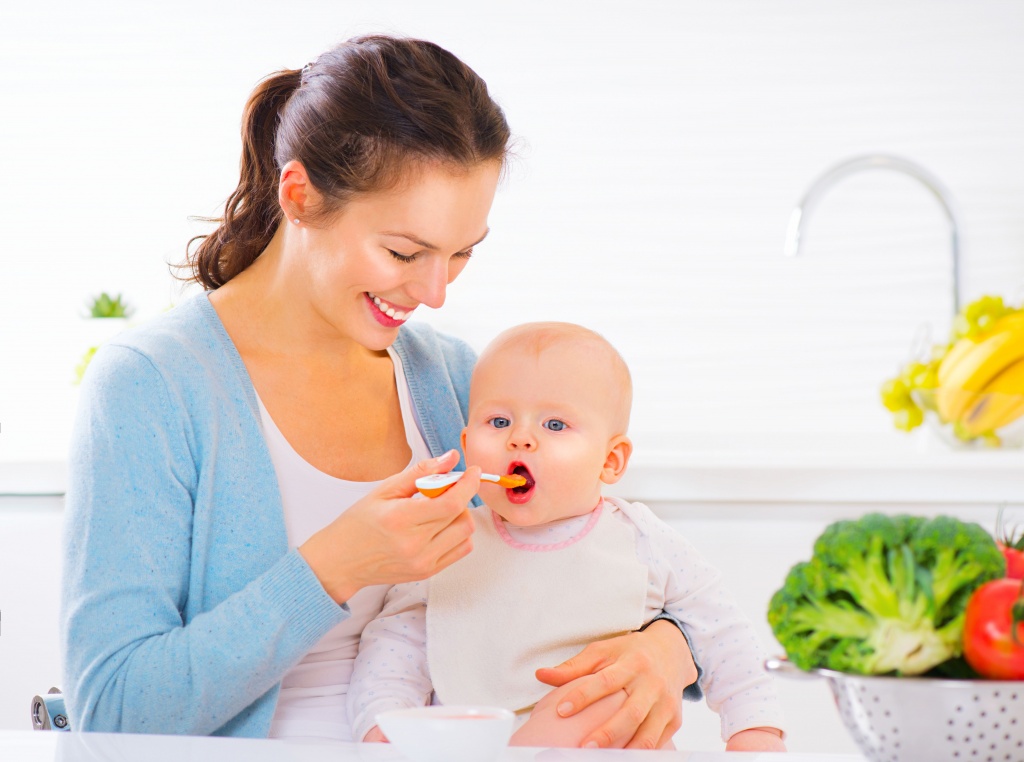
When you’re excited and you really want them to take a bite, it can be hard to wait! But be sure to wait until they close their mouth on the spoon.
This lets them know what their job is, and helps lay the foundation for them to be able to feed themselves.
What to Avoid When Spoon Feeding Baby…
You have 8 simple steps to follow! But, there are a few things you’ll want to avoid. You’ll likely see others doing these things while feeding their babies, because they’re all very common.
However, each of them can cause difficulties with eating and swallowing either in the moment you’re feeding your baby or in the future. Here’s what to avoid…
- Avoid scraping food on the roof of your baby’s mouth. You want to wait until your little one closes their mouth on the spoon.
- Don’t feed them in a reclined position. Car seats, strollers, and infant positioners all should be avoided. An upright high chair or booster seat is ideal to make sure your baby doesn’t gag, choke, or aspirate.

- Avoid distractions like the TV, phone, or toys. If they’re distracted while eating, they aren’t fully experiencing all the different flavors and textures.
- No force feeding. Let your little one decide when to take a bite. This reduces the chance of picky eating later on and sets them up for positive mealtimes in the future.
In these early days, some babies need a lot of time to get used to purees. However, if your baby is reaching the 8-9 month mark and still struggling, there could be some underlying difficulties that need addressed.
See our free workshop to learn more and contact your child’s doctor.
- Don’t overfill the spoon. You want a medium amount of puree on the spoon, near the front of the bowl.
Troubleshooting Spoon Feeding Challenges
It’s very normal for babies to need some help getting the hang of eating purees. They’re learning and may need a little more time. Here’s some common challenges you might be faced with and what you can do…
They’re learning and may need a little more time. Here’s some common challenges you might be faced with and what you can do…
Challenge #1: Your baby won’t open their mouth
When your baby won’t open their mouth for the spoon, this can be really discouraging as a parent of a new eater!
Modeling is especially helpful in these cases. Take your own spoon and a little bite of the puree. Open your mouth wide and really over exaggerate what you’re doing.
Show your baby how to do it.
You can also try placing a mirror in front of your baby while they eat or give them their own spoon that is pre-dipped with puree to try out.
Challenge #2: Your baby won’t close their mouth on the spoon
If your baby won’t close their mouth on the spoon, scraping the puree into their mouth is tempting. You want to avoid this!
It doesn’t teach them how to use their muscles to eat. It also teaches them that they have to eat a particular food, which can encourage pickiness later on.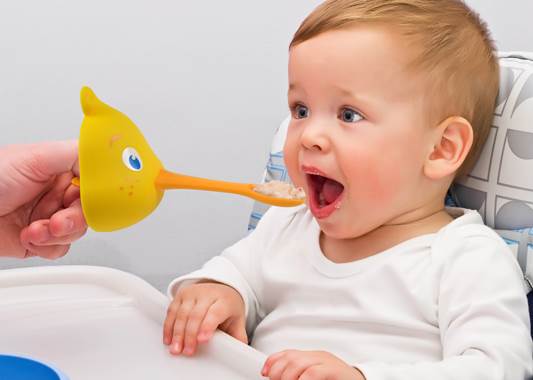
Frequently, if they don’t close their mouth on the spoon, it’s because they don’t know they’re supposed to.
You can encourage this by very gently rolling your finger above their upper lip in a downward motion towards their mouth. Showing them how to take a bite with an exaggerated close is also helpful.
Keep practicing for up to 8 months of age before seeking more help from the doctor or a feeding therapist.
Challenge #3: Your baby gags with purees
Gagging can get a bad wrap. Gagging happens first as a protective mechanism to prevent your baby from choking. But it can also turn into a problem if it starts to happen often. Or, before food even hits their mouth.
Sometimes excessive gagging happens because your baby’s mouth is sensitive to sensory input, or the textures of food.
It can be helpful to desensitize their mouth with teethers or toothbrushing. You can brush their gums even if they don’t have teeth yet!
Challenge #4: Your baby throws their bowl or spoon
We hear parents tell us that their baby is throwing their food, plate, or utensils all the time.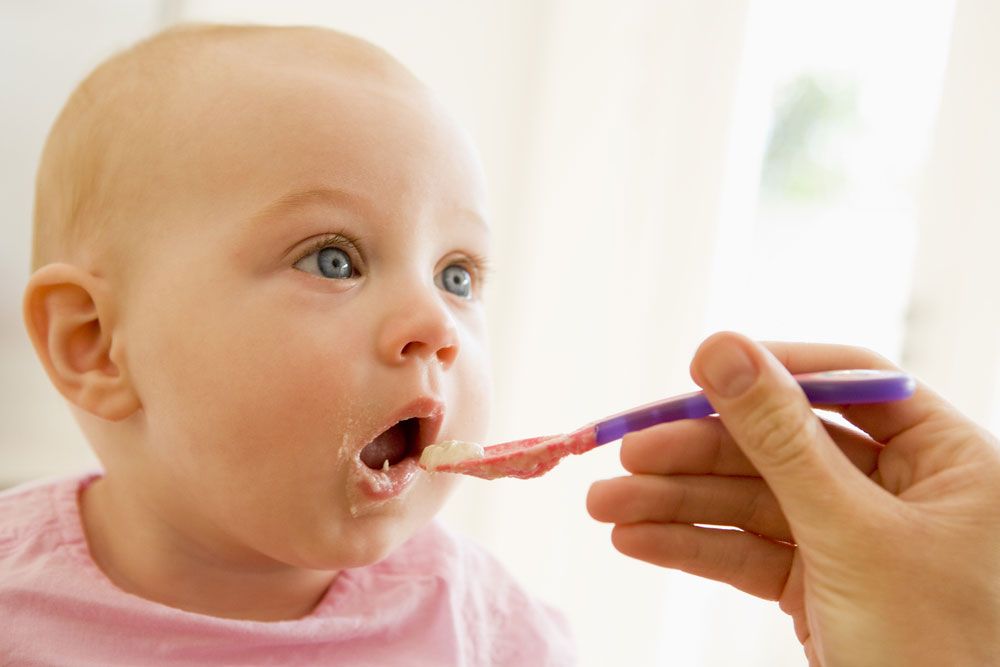 If your baby is doing this, you’re not alone at all!
If your baby is doing this, you’re not alone at all!
Usually this happens just because they’re testing things out at first. It makes a fun noise or you make a funny face whenever they do it.
It can be tempting to react negatively whenever food is thrown. Try to resist the urge and stay as neutral as possible. A negative reaction is still a reaction and can sometimes encourage them to do it more.
Try using a simple phrase like, “our food stays on the tray” and move on. It can also be helpful to use plates and bowls that suction well to their highchair to buy you a bit more time before the food flies.
Learn more in how to help babies and toddlers stop throwing food.
Challenge #5: Your baby always wants to hold the spoon
This is actually such a good thing, even though it can feel frustrating when you’re just introducing purees. They’re motivated to feed themselves!
Give them a spoon of their own that has been dipped in a little bit of puree while also having your own spoon.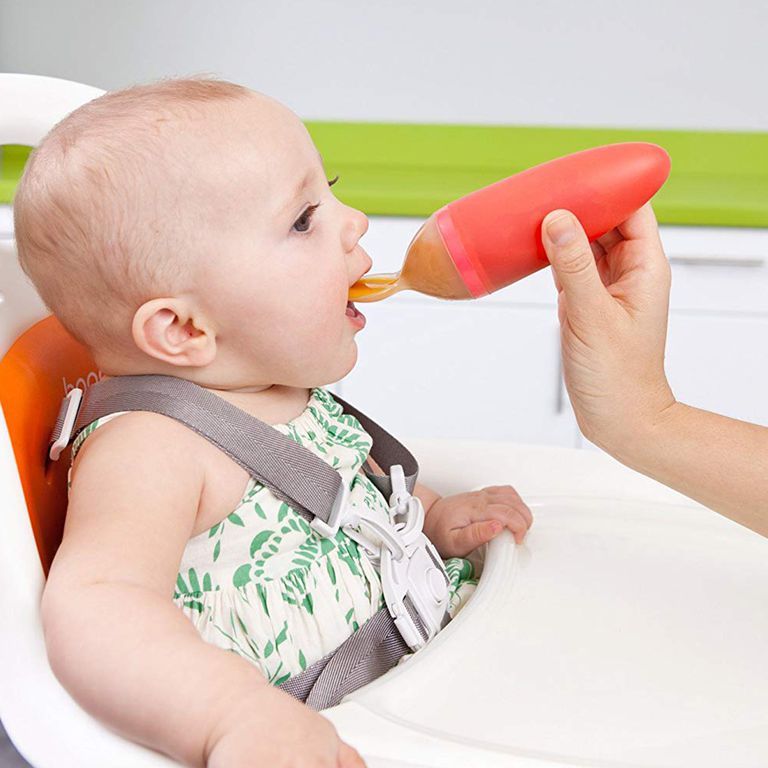 You can take turns doing the feeding.
You can take turns doing the feeding.
It might be frustrating because they will make a big mess at first and likely will get just a little bit of puree in their mouth. This is a great step towards their independence!
While 6 months is the perfect time to start spoon feeding your baby, and you should give your baby plenty of time to get the hang of it, your baby should be eating purees regularly by 8 months of age, even if it’s a small amount.
If you’ve tried all the tips and tricks we’ve suggested and they still aren’t eating solids by 9 months, it’s time to get some more help!
Our free Table Foods Workshop is the perfect place to start. It’s full of suggestions that you can start using immediately. Save your seat HERE.
Our Favorite Baby Feeding Spoons
- Take and toss spoons
- These are great spoons. They have a narrow and flatter bowl. They’re also super affordable. You certainly can take and toss them, as they suggest.
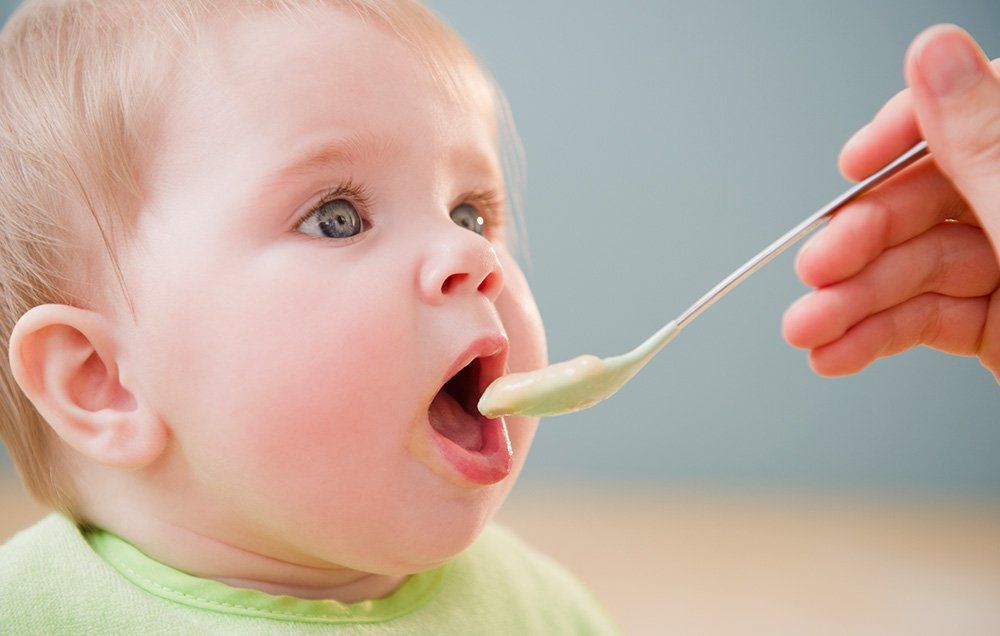 But, they can also be quickly hand washed and reused. The spoons are a bit softer and more flexible. They’re great spoons to start with!
But, they can also be quickly hand washed and reused. The spoons are a bit softer and more flexible. They’re great spoons to start with!
- These are great spoons. They have a narrow and flatter bowl. They’re also super affordable. You certainly can take and toss them, as they suggest.
- Maroon spoon
- Maroon spoons are spoons you commonly see therapists use. They’re a bit pricier though. The bowl is relatively narrow and flat, which is perfect for babies to pull puree off of more easily. These spoons are made from harder plastic.
- Flat Spoon Dippers
- These spoons were intended for babies to feed themselves. The bowl is narrow, textured, and completely flat. There is also a guard to prevent your baby from pushing the spoon too far down. Great for reducing gagging.
- EZ PEZE bowl
- While this isn’t a spoon, it’s a great tool to have on hand when you’re feeding your baby purees. It suctions to the tray and doesn’t slip very easily. It can be really helpful, especially if your baby loves to throw their bowl.
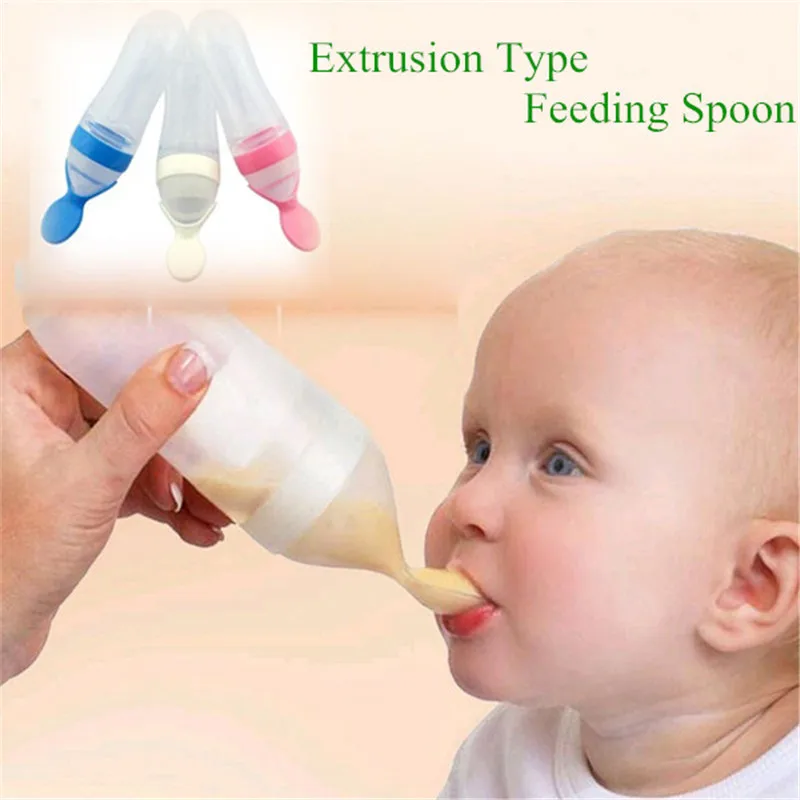
- While this isn’t a spoon, it’s a great tool to have on hand when you’re feeding your baby purees. It suctions to the tray and doesn’t slip very easily. It can be really helpful, especially if your baby loves to throw their bowl.
You’re all set! It’s time to feed that sweet little baby. Try to have fun. Let your baby play, experiment, and laugh while eating.
Let them get messy! (See why here)
Got any questions? Leave them in the comments below, we respond to every single one.
And, if you want to get ready for the next steps of feeding, table foods, grab our guide for teaching your baby how to learn to chew and eat them here!
More on Feeding Babies
5 Things Parents With They’d Known Sooner About Feeding Their Baby or Toddler
Why Your Baby Should Be Putting Toys in Their Mouth
Feeding Schedule for 8, 9 and 10 Month Olds
Must-Know Pros and Cons of Using Baby Food Pouches
Andrea Timler is a licensed occupational therapist and part of the Your Kid’s Table Team. She has over 7 years experience with expertise in development and feeding in babies, toddlers, and children. Andrea also has 4 kiddos of her own at home.![]()
Baby's first spoon | How to teach a child to eat with a spoon by himself
A spoon is an excellent exercise machine for developing fine motor skills. It's hard to eat with a spoon. You need to be able to hit the right end of the spoon first into the plate, then into the mouth, and even not drop the food. Most babies easily cope with this difficult task after a year. That is why in many books the chapter on introducing the spoon begins with the phrase: "Your child is already a year old, it's time to teach him to eat on his own." Indeed, in a year a child will learn to use a spoon faster, but an earlier acquaintance with it will improve the coordination of the baby's hands. So why waste time? nine0003
Your baby will not be able to use a spoon before 7-8 months. First, the baby must learn to sit confidently so as not to stagger (do not swing, do not fall) from each wave of the hand. Secondly, it is more convenient to eat from a full plate, that is, a portion of complementary foods should be large enough.
The most convenient product for learning is a thick, viscous porridge. Such porridge can be brought to the mouth even with an inverted spoon. So, as soon as the baby gets used to eating 50-80 grams of porridge, give him a spoon in his hands. nine0003
The correct first spoon should be light, made of silicone or food-grade plastic, with a comfortable long handle. You can also use an ordinary tea spoon or a silver spoon donated "for the first tooth", but always with a rounded handle, without sharp corners. A silver spoon must be made of table silver and have an appropriate quality certificate. Keep in mind that some babies don't like the feel of cold metal in their mouths, so it's best to opt for a special baby spoon.
For the first attempts, it is better to choose a small narrow spoon, it fits well in a small mouth. Such a spoon can be bought at any children's store, but the product must be certified. At the same time, in the economic department, get a large piece of oilcloth.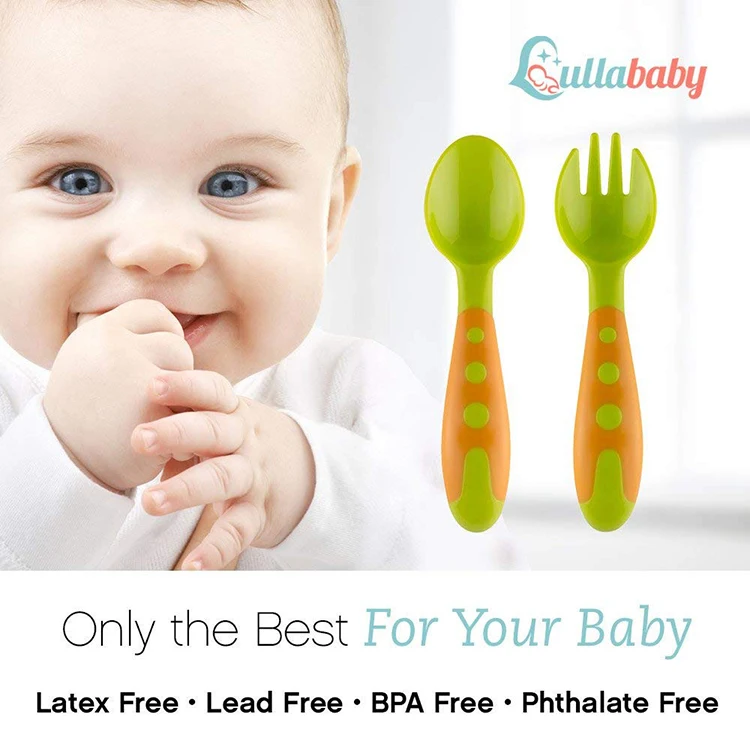 nine0003
nine0003
So, put a plate of porridge and give the baby a spoon. It’s good if the baby has managed to get a little hungry by this moment. First, help your child develop the skill correctly. Grab your baby's hand with your hand and together bring the spoon to your mouth. Part of the porridge will definitely end up on the floor, mother and walls. This is fine. The child can get into the plate with both hands and lick the porridge from his hands, lean towards the plate and eat directly from it. Smart children fill the spoon with their free hand. Allow your child these experiments, in no case scold for carelessness! Now the baby is studying, do not interfere with him. After about five minutes, take the second spoon and feed your baby slowly. Each time, give the crumbs more and more time for independent food, so that in a few months he can eat a significant part of the portion himself. nine0003
When the child is used to using a spoon, seat him or her at a common table. Toddlers copy the movements of adults, their behavior at the table. So, on the example of the elders, the child will learn accuracy. At about two years old, a child will be able to eat his soup without spilling a drop. In the meantime, be patient.
So, on the example of the elders, the child will learn accuracy. At about two years old, a child will be able to eat his soup without spilling a drop. In the meantime, be patient.
Of course, it is faster and easier for an adult to feed a child. But if you postpone the process of accustoming to independence for a long time, the baby may refuse to pick up a spoon.
Why strain yourself, because mom or dad will help anyway!.. If this happens, and the child refuses to eat on his own, do not insist. Just be distracted more often by household chores, leaving a plate (the food in it should not be hot!) And a spoon in front of the baby. At some point, a hungry child will not stand it and will take a spoon in his hands. And, of course, it will smear everything around - this is an obligatory stage of development. But the main thing is that the baby develops and learns independence. And the kitchen can be washed later. nine0003
How to spoon feed? - Encyclopedia Baby food
Levchuk Victoria © An article for those who supplement with a spoon or how to feed with a spoon. We will not discuss whether it is useful to supplement / spoon feed a child, about the benefits of independence, etc. Let's talk about the right and wrong way to spoon feed. The wrong way is to raise your hand up when you take the spoon out of the child's mouth. This method cleans the spoon from food on the teeth, gums or upper lip.
We will not discuss whether it is useful to supplement / spoon feed a child, about the benefits of independence, etc. Let's talk about the right and wrong way to spoon feed. The wrong way is to raise your hand up when you take the spoon out of the child's mouth. This method cleans the spoon from food on the teeth, gums or upper lip.
Scraping is not a normal, natural way of feeding. This method of feeding prevents the lips from doing their job and shrinking around the spoon. In this case, the child's head leans back when he tries to lick the spoon and swallow food.
Most often we see well-intentioned parents putting a spoon in their child's mouth. The adult lifts the spoon and cleans the spoon most often on the baby's upper lip . This can be an effective way of getting food into the child's mouth, but the child does not practice using the muscles of the lips, cheeks, and jaw in a more controlled and mature manner. nine0003
Contents:
Have him see and smell the food before putting it in his mouth.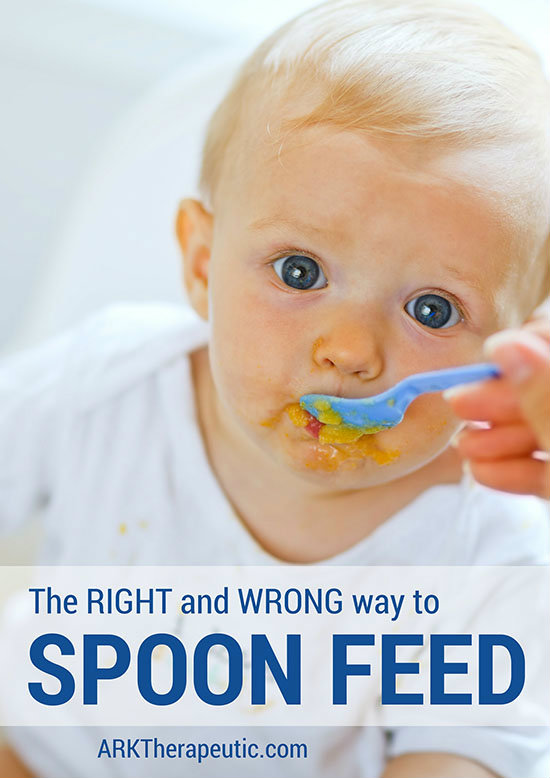 Let your child touch the food with their fingers before putting it in their mouth. He might want to dip his finger into the plate and lick it, okay. The first time feeding is necessary, the baby is exploring the world in this way.
Let your child touch the food with their fingers before putting it in their mouth. He might want to dip his finger into the plate and lick it, okay. The first time feeding is necessary, the baby is exploring the world in this way.
2. Put the spoon on the tongue and hold it there until the child closes the lips.
3. Then take the spoon straight out of the mouth (not at an angle). The chin should remain straight and not rise up. The child must learn to eat food, and thoughtless swallowing does not teach anything. If the mother undertook to feed the child from a spoon, then we do it right.
4. Rejection . If he refuses, then offer the child several times, you can just get your lips dirty in food so that he licks them in order to feel the texture and taste of food on his lips in a playful way. Let's not rush.
Related articles:
- How to teach a child to chew?
- At what age does a child begin to eat independently?
Spoon-feeding and speech
What is spoon-feeding? Just opened, chewed, closed. But it turns out that the sensory-motor system is involved in the process of spoon-feeding. Here are a few examples of the benefits of proper spoon feeding.
But it turns out that the sensory-motor system is involved in the process of spoon-feeding. Here are a few examples of the benefits of proper spoon feeding.
1. When the spoon is fed into the mouth in a forward/forward motion, the child must use the lip muscles to clear the spoon of food. These are the same muscles that are used to create the sounds "M", "P", "B". nine0003
2. The suggestion of a spoon straight will make it easier to round the lips. Rounding the lips helps to make the sounds "O", "U", "A".
3. Offering a spoon from the side or corner of the lips will make it easier to close the lips. Closing the lips helps to make the sounds "M", "P", "B".
4. Closing the lips is also important for controlling saliva and keeping food in the mouth while eating.
5. Over time, the spoon helps the child practice using the jaw muscles as they open and close their mouth to eat in a more controlled manner.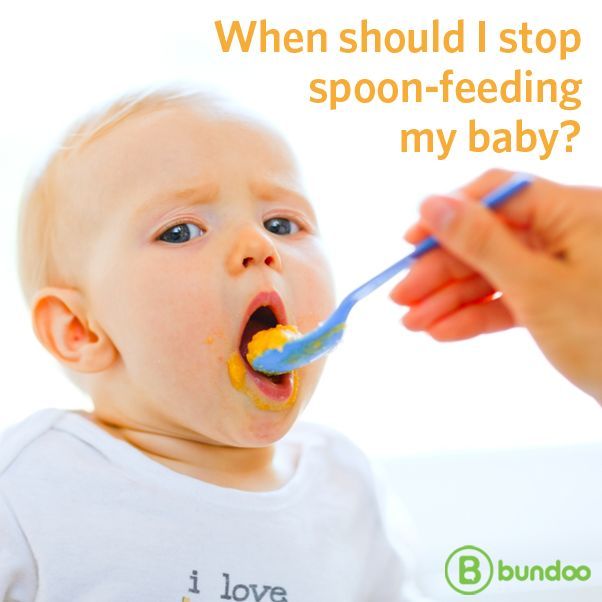 nine0003
nine0003
How can I help my child eat from a spoon?
Children should instinctively close their lips, but if they do not, there are a few things that can be done to help oral-motor skill:
until the lips close.
2. Light pressure on the tongue can be used to close the lips.
3. For children with oral-motor problems, 9 can be selected0031 vibrating spoon , and also massage the gums before eating.
4. It may be necessary to stretch the lips beforehand to help close the lips.
Gymnastics to learn to close the mouth
There are many different lip stretching techniques that parents can try to spoon feed their baby:
- Gently pull out the upper lip with the pad of your finger. Repeat on the lower lip, gently stretching it up.
- Gently pinch the philtrum or philtrum (the skin between the nose and upper lip) and pull downwards.


